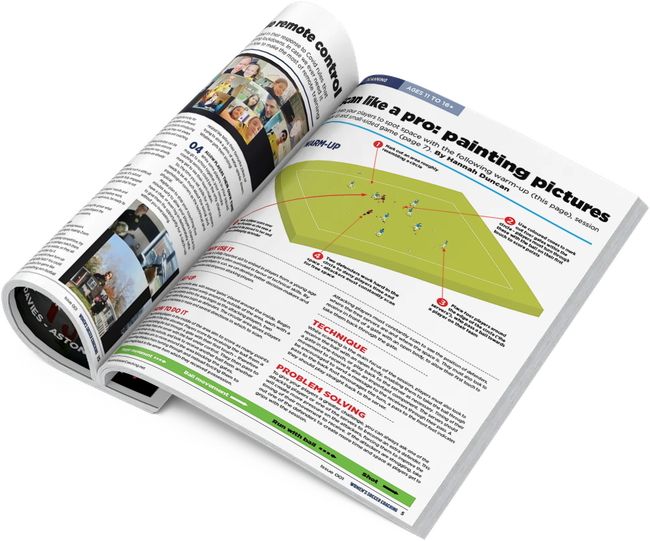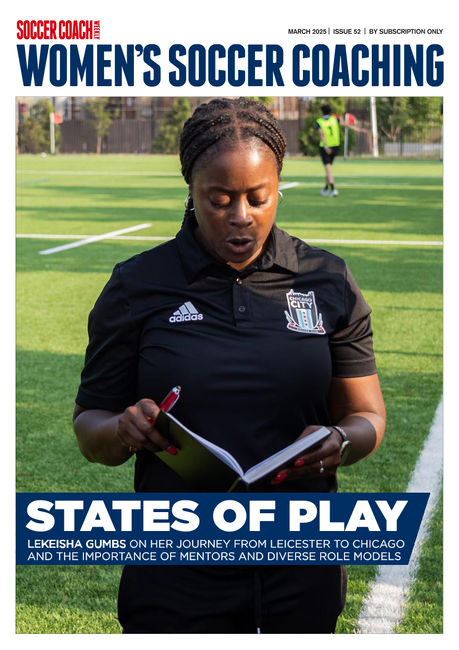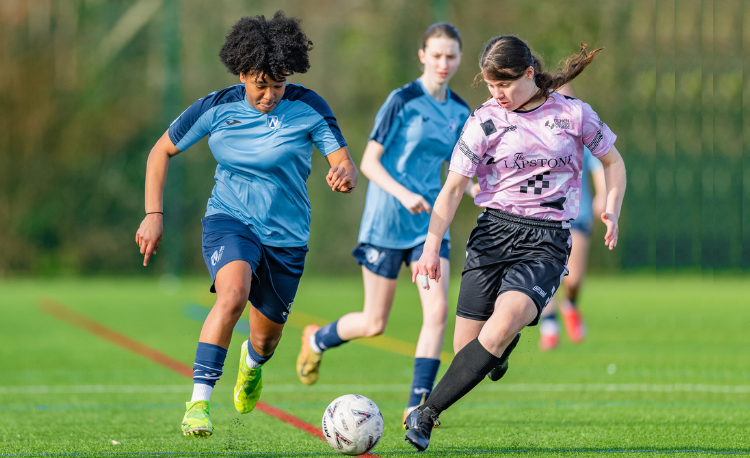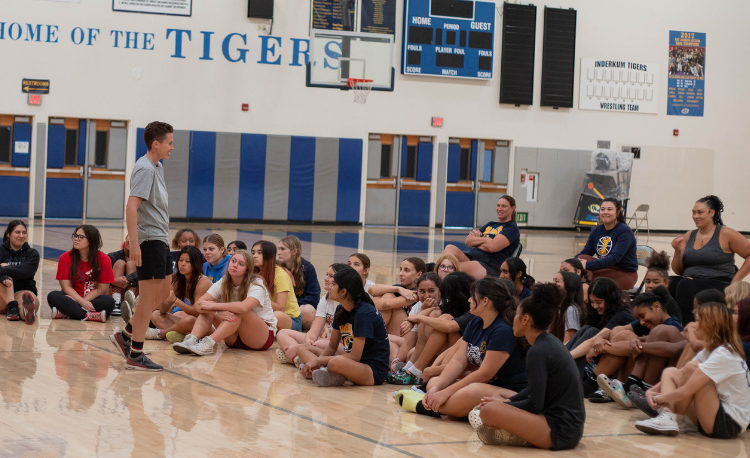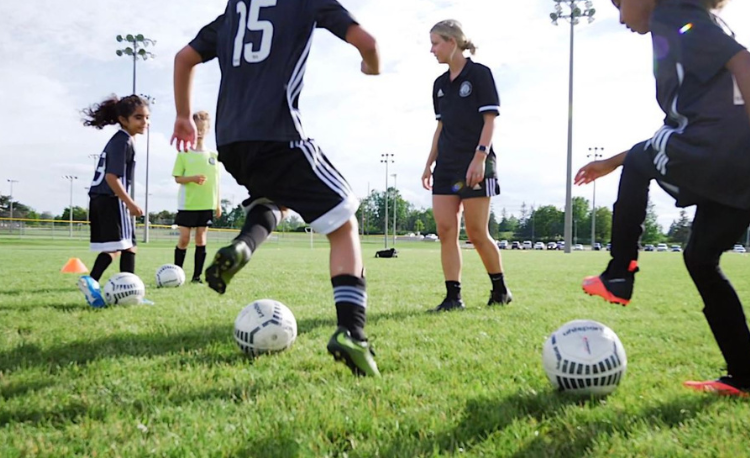You are viewing
1 of your 3 free articles
Forward thinking
Creating space to progress attacks is a key early skill young players should start to master, says Manchester City foundation phase lead Carl Wild
In the early stages of the Foundation Phase, the primary focus should always be on individual possession, supporting the players so they become confident, creative and comfortable on the ball.
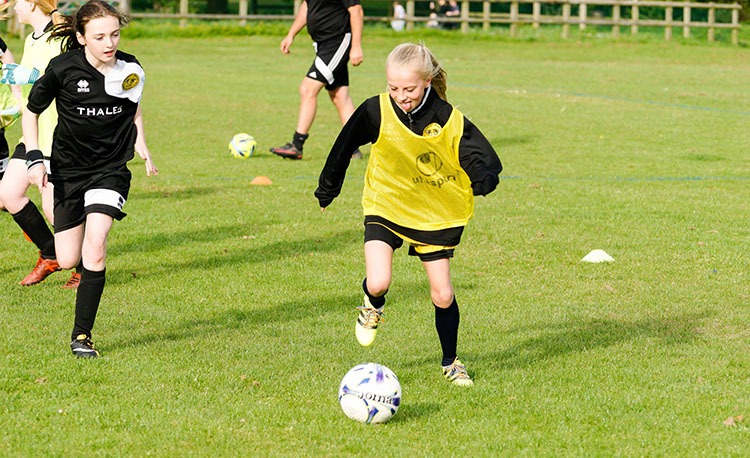
However, there is also a need to introduce them to how to combine effectively with team-mates, and give them an understanding of when and why to do this.
Though it should not be as much of a priority as individual possession to begin with, more of an emphasis can be placed on this key aspect of the game as players start to approach the Youth Development Phase.
The ability to pass the ball effectively is essential for all principles of attacking, such as support and creating space, but it is particularly important when it comes to penetration.
As with all invasion games, the need to progress forward is a key aspect of football. The purpose of this is simply to move away from your own goal and towards the opponents’, to create scoring opportunities.
To achieve this progression, there is a need to get the ball past opposition players and later on, when they play the full version of the game, this becomes not just individual players, but ‘units’ of players.
It can be achieved in a number of ways. The ball could be played over opposition players or you could go around them. But arguably the most effective way is to play through them, by passing the ball between two opposition players. The aim of this is to break the opponent’s lines, while allowing possession to be retained with a good amount of security.
The practices on pages 10, 11 and 12 introduce this concept of playing the ball through areas of space and helps to prepare players for this vital aspect of the game.
At this stage, the importance of why we do it does not necessarily have to be explained to the players. It is just about understanding concepts - if there is a gap to play the ball forward to a team-mate, then look to play it; if there is not, can we create the space so it can be played forward?
What you might find though, especially when working with girls, is that they want to know ’why?’. This can be advantageous, as understanding the ‘why’ can act as an accelerant in the learning process. But what we do not need to do is provide this information at the start of the session.
"As with all invasion games, progressing forward is a key aspect of football..."
Instead, we can give the players the time to investigate it themselves throughout the different practices. At the end of the session, give them the chance to tell you why they think it is important - it’ll help to consolidate the learning that has gone before.
For instance, the players could be asked to write down, after the final practice, why they think it is important to play the ball through a space? What happens when you do?
These practices can also be easily adapted to meet the needs of players. The level of difficulty can be varied just by changing the size of the main area and also the target area which the ball has to travel through. By increasing one or both of them, it will make the task less challenging.
Also look out for the teams struggling to retain possession. They need to do this to be able to practice the main focus of the session. So if they do need help to retain possession, move some of the support players into the main area. It will all become apparent.
Overall, we are looking to provide the players with a challenging and fun environment, where they can practice ‘playing forward’.
Related Files
Newsletter Sign Up
Newsletter Sign Up
Discover the simple way to become a more effective, more successful soccer coach
In a recent survey 89% of subscribers said Women's Soccer Coaching makes them more confident, 91% said Women's Soccer Coaching makes them a more effective coach and 93% said Women's Soccer Coaching makes them more inspired.
*includes 3 coaching manuals
Get Inspired
All the latest techniques and approaches
Women's Soccer Coaching offers proven and easy to use soccer drills, coaching sessions, practice plans, small-sided games, warm-ups, training tips and advice.
We've been at the cutting edge of soccer coaching since we launched Soccer Coach Weekly in 2007, creating resources for the grassroots youth coach, following best practice from around the world and insights from the professional game.

